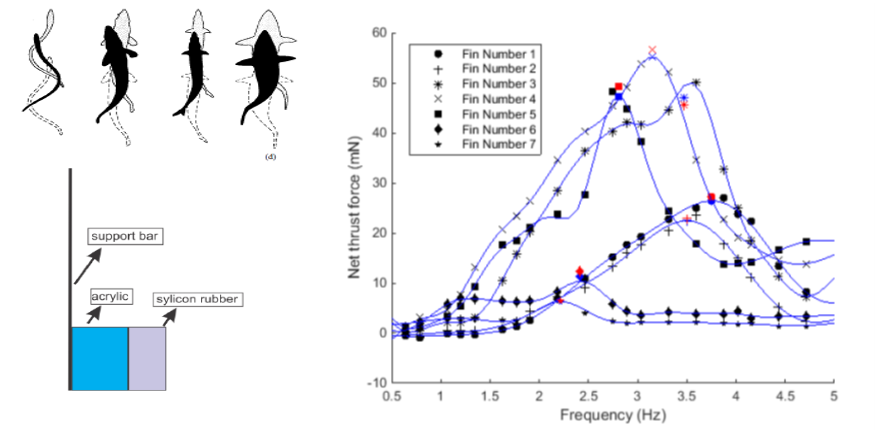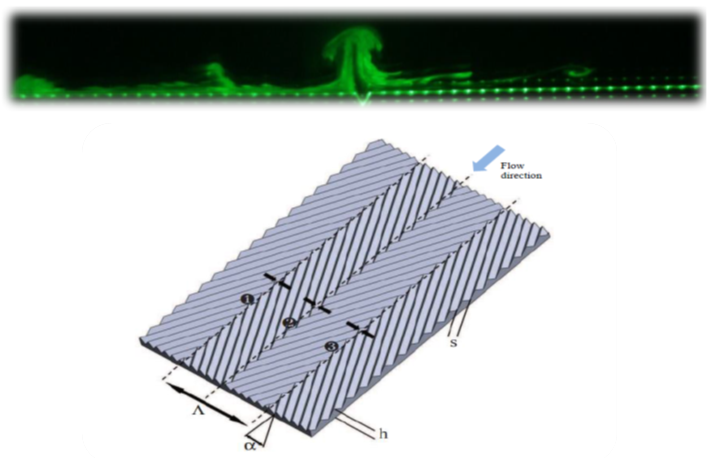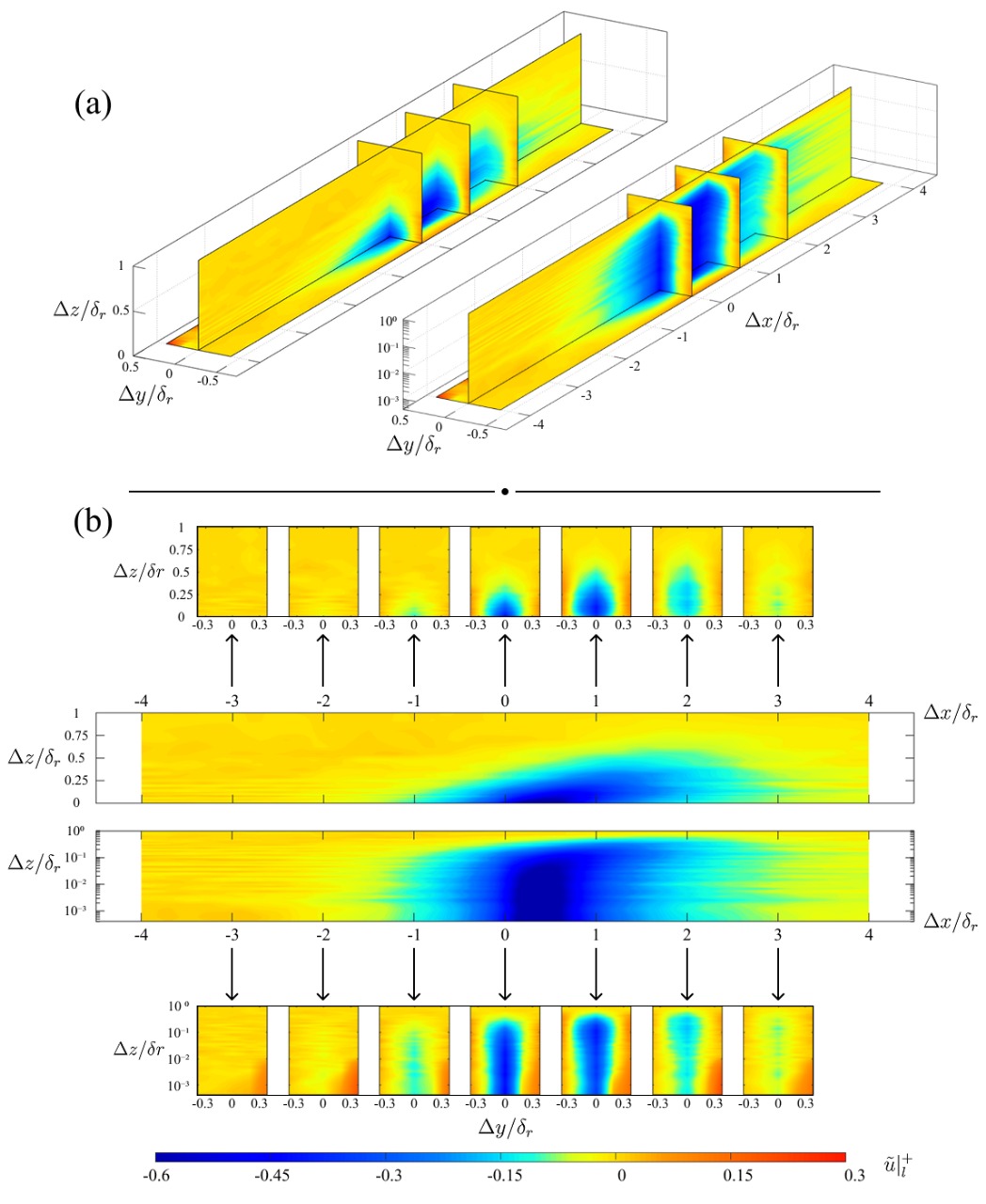
PIV Measurement of Flow around Accelerated Normal Flat Plate.
In experimental fluid mechanics, we conduct research on the latest experimental fluid dynamics problems such as bio-inspired propulsion and drag reduction method. We developed our own state-of-the-art experimental tools such as Particle Image Velocimetry (PIV) and Constant Temperature Anemometry (CTA) systems and use them to investigate the flow physics.
Optimum Flapping Wing

Optimum Flapping kinematics during Hover.
One experimental study is an attempt to understand the relationship between the kinematics and force production produced by flapping wings or aquatic type propulsion. Here, we combined experimental and optimization methods to find the optimum kinematic parameters to produce force. The setup consists of a model connected to load cells, load cells connected to servos, and the servos are mounted on a carriage. The carriage is moved translationally by a motor. The output of the load cells is sent to the PC and used as the objective function by our optimization algorithm. The output of the optimization are parameters to control the servos and motor. Also, we placed camera and a laser to capture the image of seeding particles for PIV evaluation.

Flapping visualization
Maximizing Thrust Produced by Flexible Panel

Thrust VS. Frequency for Different Flexibility.
Another experimental study is on finding the optimum thrust produced by swimming-like motion. Specifically, we want to study how the flexibility and oscillation frequency affect the wake and, hence, the thrust production . The experimental setup is similar to the flapping experiment (here, we replaced the wing model with a fin panel which was immersed in a water tank). Experiment was conducted for several panels with different flexibility. Again, the fitness function thrust is measured directly using a load cell.

Optimum Swimming Kinematics.
It is found that bending of the panel effect the lateral movement of the fin and, hence, the lateral separation between reverse Karman vortices. 90° phase difference between the leading and trailing edge of the fin generates maximum thrust
Turbulent Boundary Layer
Another experimental research topic in our group is on the physics and control of turbulent boundary layer. This is mostly experimental studies which involved measurement using hot-wire anemometry. Several projects that has been conducted include the passive control of turbulent boundary layer using ribblets and the determination of surface roughness parameter from hotwire measurement.

Converging-divering riblets experiment.
This experimental project studies the effect of converging-diverging riblets, which is inspired by the herringbone, on flat-plate boundary layer using hotwire. Such riblets have been shown to reduce the skin friction drag up to 20%. It has been observed that the riblet patterns generate counter-rotating vortices, which alter the turbulent boundary layer’s structures. We want to study the physics behind this phenomena.


Experimental Determination of Roughness Parameter.
Naturally, turbulent flows passes over surfaces with certain roughness. For examples, in flow passing over an aircraft wing, or along the hull of a ship, the particular roughness that the surface has cannot be ignored. The surface roughness increases the drag force and consequently resulting an increase in the fuel consumption. Unfortunately, surface roughness parameter is not an easy quantity to determine. In this experiment, measurement of velocity profiles inside the turbulent boundary layer of a flat plate with certain roughness are performed. A methodology is developed in order to obtain the roughness parameter from the measured data.
